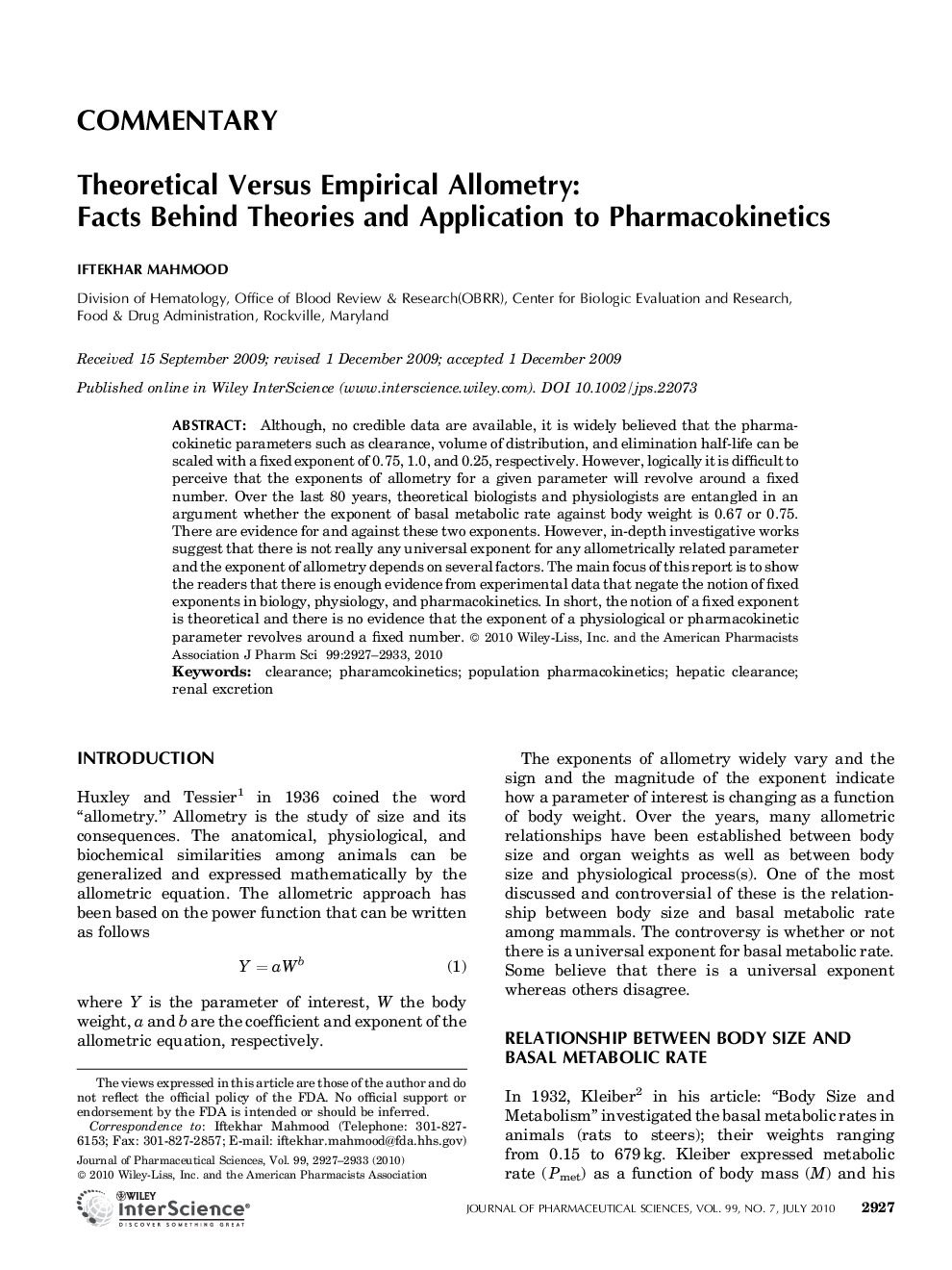| کد مقاله | کد نشریه | سال انتشار | مقاله انگلیسی | نسخه تمام متن |
|---|---|---|---|---|
| 2486259 | 1114379 | 2010 | 7 صفحه PDF | دانلود رایگان |
عنوان انگلیسی مقاله ISI
Theoretical Versus Empirical Allometry: Facts Behind Theories Application to Pharmacokinetics
دانلود مقاله + سفارش ترجمه
دانلود مقاله ISI انگلیسی
رایگان برای ایرانیان
کلمات کلیدی
موضوعات مرتبط
علوم پزشکی و سلامت
داروسازی، سم شناسی و علوم دارویی
اکتشاف دارویی
پیش نمایش صفحه اول مقاله

چکیده انگلیسی
Although, no credible data are available, it is widely believed that the pharmacokinetic parameters such as clearance, volume of distribution, and elimination half-life can be scaled with a fixed exponent of 0.75,1.0, and 0.25, respectively. However, logically it is difficult to perceive that the exponents of allometry for a given parameter will revolve around a fixed number. Over the last 80 years, theoretical biologists and physiologists are entangled in an argument whether the exponent of basal metabolic rate against body weight is 0.67 or 0.75. There are evidence for and against these two exponents. However, in-depth investigative works suggest that there is not really any universal exponent for any allometrically related parameter and the exponent of allometry depends on several factors. The main focus of this report is to show the readers that there is enough evidence from experimental data that negate the notion of fixed exponents in biology, physiology, and pharmacokinetics. In short, the notion of a fixed exponent is theoretical and there is no evidence that the exponent of a physiological or pharmacokinetic parameter revolves around a fixed number.
ناشر
Database: Elsevier - ScienceDirect (ساینس دایرکت)
Journal: Journal of Pharmaceutical Sciences - Volume 99, Issue 7, July 2010, Pages 2927-2933
Journal: Journal of Pharmaceutical Sciences - Volume 99, Issue 7, July 2010, Pages 2927-2933
نویسندگان
Iftekhar Mahmood,